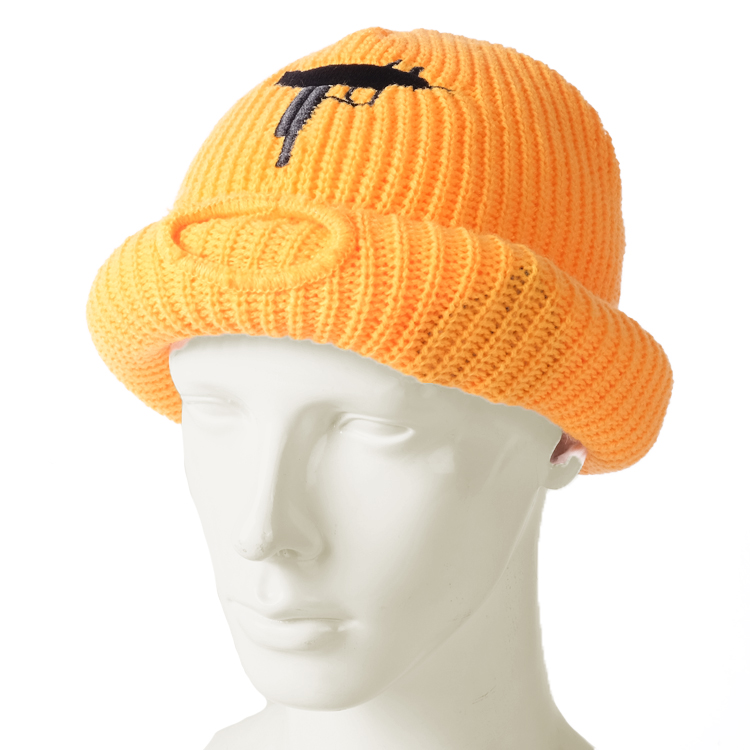A balaclava is a piece of winter headgear that protects the head and face while leaving the mouth, eyes, and nose exposed. Some styles can also be pulled up over the nose and mouth to offer increased protection. Balaclavas are ideal for preventing cold exposure and frostbite to the face and ears. In this article, I will show you how to wear a balaclava more cool.
Traditionally, Balaclavas were made of wool but now they are comprised of a variety of fabrics including silk, fleece, and bamboo. Balaclavas are also worn for protective purposes by firefighters, police, race car drivers, electrical workers, SWAT, and special forces personnel.
Wool: It holds moisture without feeling wet, plus it is a great thermal insulator.
Fleece: flexible, lightweight comfortable, durable, highly breathable, and moisture-resistant.
Synthetic blends: Blending improves the texture, color, and quality of the material.

A. Gathering the balaclava with both hands, ensuring proper alignment of the eye and mouth openings
Again, a balaclava is a piece of winter headgear that protects the head and face while leaving the mouth, eyes, and nose exposed. So you should gather this item with both hands and ensure proper alignment of the eye and mouth opening.
B. Sliding the balaclava over the head, covering the entire head, face, and neck
A. Ensuring a snug and secure fit without causing discomfort or restricting movement
B. Adjusting the balaclava around the eyes, nose, and mouth to allow for clear vision and easy breathing
The most obvious purpose of the balaclava is to keep the wearer warm and dry. Because balaclavas cover the head and lower part of the face, heat from the top of your head doesn't escape, but the breathable material of balaclavas prevents fogging on goggles. Be sure to adjust the balaclava well so that you can have clear vision and breathe easily.
A. Folding the balaclava up or down to expose or cover the nose and mouth, depending on personal preference and weather conditions
There are two methods of wearing, regular wear and unique wear.
Regular wear: Usually, you can wear a balaclava tightly on the head, and fully cover your face, so that it can protect you from bone-chilling wind. In this way, it looks like a mask.
Unique wear: The ski balaclava can also be worn like a beanie, just fold the bottom of it to the middle, then you can wear it.

B. Tucking the balaclava into a jacket or layering it with other winter accessories for added warmth and protection
For the regular wear, you need to do 3 steps:
Step 1: Place the balaclava on the head, making sure the opening is in front. Now gently roll the brim down until the balaclava's lid rests on your head.
Step 2: After that, roll the remaining part down to your neck and part of your shoulders, although this will strictly depend on the nature of the balaclava you're using.
Step 3: Drag the bottom down while trying to straighten the opening of the eye. This is easier if you use a flexible balaclava. You can line the opening that fits your face.
A. Coordinating the balaclava with winter jackets, coats, or ski/snowboarding gear
Balaclavas are designed to cover the entire head and neck, balaclavas have openings for the eyes and, sometimes, the nose and mouth. Balaclavas are popular for outdoor winter sports and activities due to their insulating properties and ability to be worn under the hood of a coat or jacket. And that’s why you should coordinate this item well with outfits.
B. Considering the color and design of the balaclava to complement the overall outfit
The fashion industries often use black for sophistication and glamour, and warm colors such as red, orange, and pink for passion, confidence, and excitement.
Also, there are complementary colors, the opposite colors on the color wheel, such as: yellow and purple, blue and orange, red and green. You can be sure that if you pair a yellow dress with a purple jacket or a blue skirt with an orange shirt, you'll get a really striking combo. Matching the color properly can help you look fashionable.

A. Storing the balaclava in a clean, dry place to prevent odors or mildew
If it is too humid or rainy to dry clothes outside, hang them on a rack inside with space between each garment. Use a fan to help circulate the air, or a dehumidifier to remove excess moisture. After you've done a load of washing, ensure as much moisture is removed from the balaclavas as possible.
B. Washing the balaclava regularly, following the manufacturer's instructions, to maintain cleanliness and freshness
Balaclavas that are worn more than 3 times a week should be washed weekly. Balaclavas that are worn at least once a week should be washed at least once a month.
C. Avoiding excessive heat or harsh chemicals that could damage the balaclava's material
Excessive heat can draw out straw hat fibers, and cause permanent damage to both straw and felt, and that’s why you need to avoid storing them in a hot environment.
Wear balaclava with confidence, that's fashion confidence. It's knowing that what you're wearing looks good, and it doesn't matter if people are giving you compliments or not. SO trust your personal preference when wearing balaclava, and that’s it. Any questions, just comment below and let us know!!